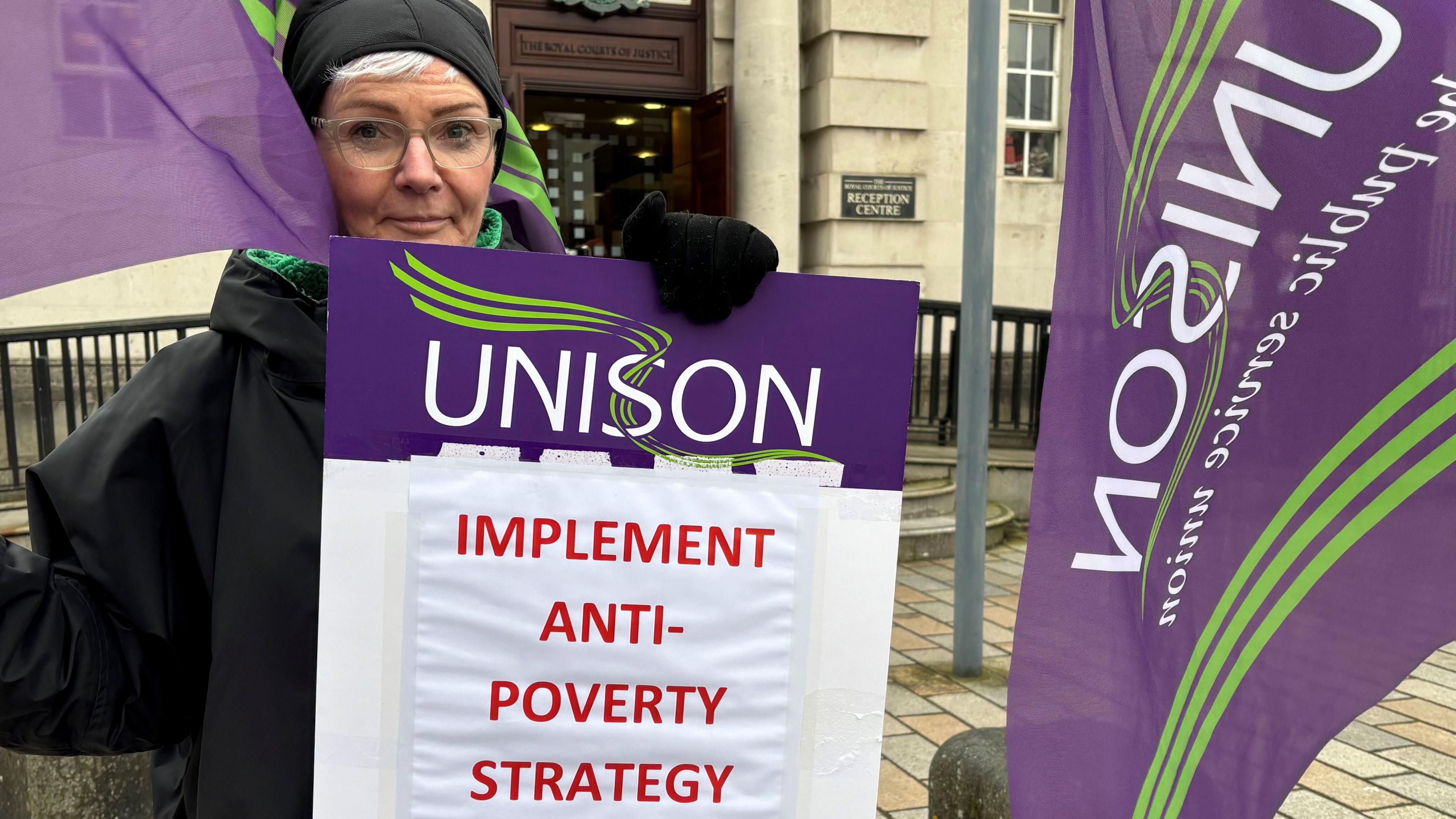Anti-poverty strategy to be considered by ministers

The anti-poverty strategy is a requirement inserted into the Northern Ireland Act, following the St Andrews Agreement in 2006
- Published
A long-delayed draft anti-poverty strategy will be sent to executive ministers on Monday for consideration, Communities Minister Gordon Lyons has said.
Earlier this month, Stormont's executive committee was found in breach of its legal obligation to adopt the strategy by a court ruling.
The strategy was first committed to 18 years ago in an effort to tackle poverty, social exclusion and deprivation.
Lyons had previously said he would bring the document to the executive by the end of March.
On Monday, SDLP MLA Mark H Durkan pressed the minister to spell out when the public would see it and feel the benefits of it.
The minister replied that it would depend on the strategy being signed off with approval from other executive parties.
"I think it's important that the strategy is flexible... first and foremost this will provide the framework for the way forward to make sure we're putting in place policies that make a difference," he added.

Communities Minister Gordon Lyons had previously said he would bring the document to the executive by the end of March
Earlier this month, Lyons said he believed the anti-poverty strategy was a "realistic" but long-term plan to tackle poverty.
He made the comments after figures from the Department for Communities (DfC) suggested about 22% of children in Northern Ireland are growing up in poverty.
Benefits cuts plan is 'absolutely terrifying'
- Published18 March
Handling of child poverty plan is 'catalogue of failures'
- Published7 November 2024
What is the anti-poverty strategy?
The anti-poverty strategy is a requirement inserted into the Northern Ireland Act, following the St Andrews Agreement in 2006.
There have been multiple court orders and legal challenges made as no strategy has been implemented in Northern Ireland.
In January, judgement was reserved in a recent legal challenge brought against Stormont for "failing to adopt" an anti-poverty strategy for Northern Ireland.
In March, Stormont's Executive Committee was found in breach of its legal obligation to adopt a strategy at the Royal Courts of Justice.
How is poverty measured?
There are two main measurements of low income used by the government. Income is counted as the money a household has to spend after housing costs are taken into account.
Absolute poverty measures how many people this year cannot afford a set standard of living. The Department for Work and Pensions currently defines it based on the living standard an average income could buy in the year ending in March 2011. If your income is 40% below this, after adjusting for rising prices since then, you are classed as living in absolute poverty.
Relative poverty is the number of people whose income is 40% below the average income today.
An individual is considered to be in relative poverty if they are living in a household with an income below 60% of the typical UK income.
This is a measure of whether those in the lowest income households are keeping pace with the growth of incomes in the population as a whole.
Related topics
- Published5 March

- Published31 January

- Published28 March
